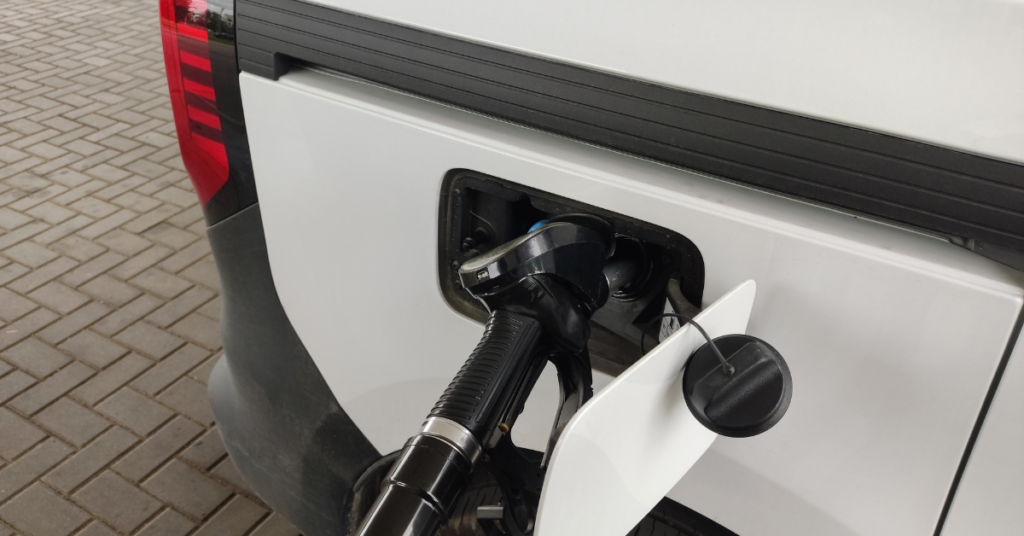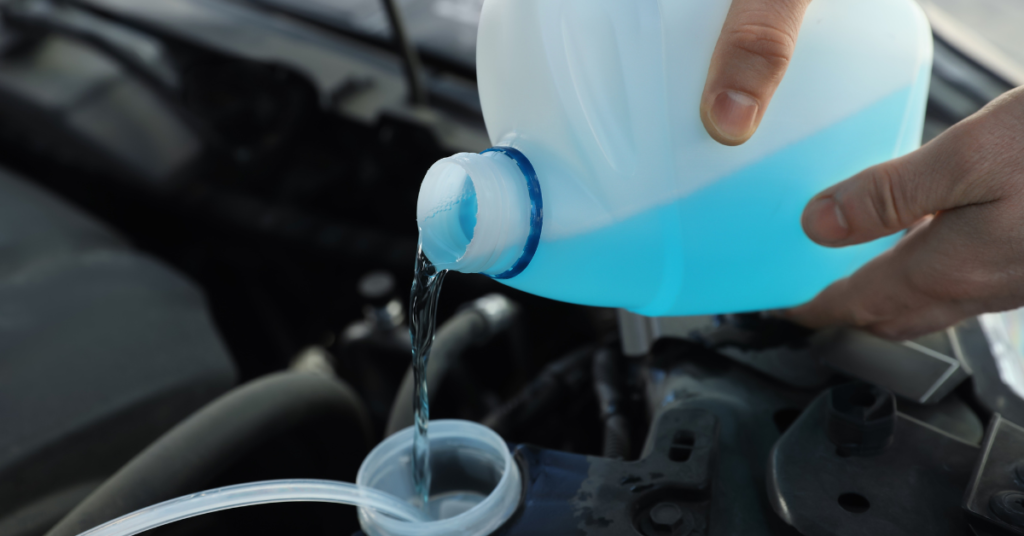
The P0456 Hyundai code in a vehicle indicates a problem with the evaporative emission control system. This system is designed to prevent the release of fuel vapor into the atmosphere.
When the P0456 code is triggered, it means that there is a small leak in the system, which needs to be addressed to ensure optimal performance and to meet the environmental standards.
Contents
Understanding the Evaporative Emission Control System
The evaporative emission control system, commonly known as EVAP, is responsible for collecting and storing fuel vapor from the fuel tank and preventing it from escaping into the atmosphere.
This system plays a crucial role in reducing harmful emissions and ensuring compliance with environmental regulations.
The EVAP system consists of several components, including the fuel tank, charcoal canister, purge valve, vent valve, and various hoses and lines.
Each component works together to ensure that any fuel vapor produced is safely contained and eventually burned off in the engine.
Common Causes of P0456 Hyundai Code
The P0456 code can be triggered by several reasons, including:
Loose or Missing Gas Cap

A loose or missing gas cap is one of the most common causes of the P0456 code. The gas cap is designed to create a seal between the fuel tank and the outside air. If it is loose, damaged, or not properly installed, it can cause fuel vapor to escape and trigger the code.
It is essential to always ensure that the gas cap is properly tightened after refueling to prevent any potential leaks.
Leaking Fuel Filler Neck
The fuel filler neck connects the fuel tank to the fuel cap. If it is damaged or has a leak, it can cause fuel vapor to escape and trigger the P0456 code.
Regularly inspecting the fuel filler neck for any signs of damage or leaks is crucial to identify and address issues promptly.
Cracked or Damaged EVAP Hoses
The EVAP system includes various hoses and lines that can become cracked or damaged over time. These cracks or damages can lead to small leaks, triggering the P0456 code.
It is important to routinely check the EVAP hoses and lines for any signs of wear, such as cracks or damages, and replace any faulty components to maintain the integrity of the system.
Malfunctioning Purge Valve
The purge valve is responsible for controlling the flow of fuel vapor from the charcoal canister to the engine. If it fails to function properly, it can cause fuel vapor leaks and trigger the P0456 code.
Testing the purge valve regularly and replacing it with a new one if necessary can help prevent any potential issues.
Faulty Charcoal Canister

The charcoal canister is designed to store fuel vapor until it can be burned off in the engine. If the canister becomes saturated or damaged, it can cause fuel vapor leaks and trigger the P0456 code.
Regularly verifying the condition of the charcoal canister and replacing it if needed is essential to ensure the proper functioning of the EVAP system.
Diagnosing and Resolving the P0456 Code
If you have a Hyundai vehicle and the P0456 code has been triggered, it is essential to diagnose and resolve the issue promptly.
Ignoring the code can lead to further damage to the EVAP system and may result in decreased fuel efficiency and increased emissions. Here are the steps you can take to address the problem:
Check the Gas Cap
Start by inspecting the gas cap. Ensure that it is tightly sealed and undamaged. If it is loose or damaged, replace it with a new one. This simple step can often resolve the P0456 code and prevent any further issues.
Inspect the Fuel Filler Neck
Examine the fuel filler neck for any signs of damage or leaks. If you notice any issues, such as cracks or leaks, it may need to be repaired or replaced.
Addressing any problems with the fuel filler neck is crucial to maintaining the integrity of the EVAP system.
Check the EVAP Hoses
Inspect all the EVAP hoses and lines for cracks, leaks, or damages. Over time, these components can deteriorate and develop small leaks, leading to the P0456 code.
If you find any issues, replace the faulty components to ensure the proper functioning of the system.
Test the Purge Valve
Test the purge valve to ensure it is functioning correctly. The purge valve plays a vital role in controlling the flow of fuel vapor, and any malfunction can result in fuel vapor leaks.
If the purge valve is not working as intended, replace it with a new one to prevent any potential issues.
Verify the Charcoal Canister
Finally, check the charcoal canister for any signs of saturation or damage. A saturated or damaged canister can cause fuel vapor leaks and trigger the P0456 code.
If necessary, replace the canister to resolve any fuel vapor leaks and ensure the optimal performance of the EVAP system.
If you are unsure about performing these steps yourself, it is recommended to consult a certified Hyundai technician who can diagnose and fix the issue accurately.
They have the expertise and knowledge to identify the root cause of the problem and provide the necessary repairs or replacements.
Preventive Measures to Avoid P0456 Code
To minimize the chances of the P0456 code appearing in your Hyundai vehicle, consider the following preventive measures:
Always ensure the gas cap is properly tightened after refueling. A loose gas cap is a common cause of the P0456 code, and a simple check can prevent any potential leaks.
Regularly inspect the fuel filler neck for any damages or leaks. Addressing any issues promptly can help maintain the integrity of the EVAP system.
Routinely check the EVAP hoses and lines for cracks or damages. These components can deteriorate over time, and routine inspections can help identify and replace any faulty parts.
Follow the recommended maintenance schedule provided by Hyundai to ensure the proper functioning of the EVAP system. Regular maintenance can help prevent any potential issues and prolong the lifespan of the system.
If you notice any warning signs or symptoms of a potential EVAP system issue, such as a strong fuel smell or decreased fuel efficiency, have your vehicle inspected by a professional.
Early detection and prompt repairs can prevent the occurrence of the P0456 code.
By taking these preventive measures, you can reduce the risk of encountering the P0456 code and ensure the long-term performance and environmental compliance of your Hyundai vehicle.
Remember, addressing the P0456 code promptly is crucial not only for the proper functioning of your vehicle but also for minimizing harmful emissions and protecting the environment.
FAQ
What does the P0456 code in a Hyundai vehicle indicate?
The P0456 code in a Hyundai vehicle indicates a problem with the evaporative emission control system, specifically a small leak in the system.
What are the common causes of the P0456 code?
The common causes of the P0456 code include a loose or missing gas cap, a leaking fuel filler neck, cracked or damaged EVAP hoses, malfunctioning purge valve, and faulty charcoal canister.
How can I diagnose and resolve the P0456 code in my Hyundai vehicle?
To diagnose and resolve the P0456 code, you can start by checking the gas cap, inspecting the fuel filler neck, checking the EVAP hoses, testing the purge valve, and verifying the charcoal canister. If unsure, it is recommended to consult a certified Hyundai technician.
What preventive measures can I take to avoid the P0456 code in my Hyundai vehicle?
To minimize the chances of encountering the P0456 code, you can ensure the gas cap is properly tightened after refueling, regularly inspect the fuel filler neck, routinely check the EVAP hoses and lines, follow the recommended maintenance schedule, and have your vehicle inspected if you notice any warning signs or symptoms of an EVAP system issue.



